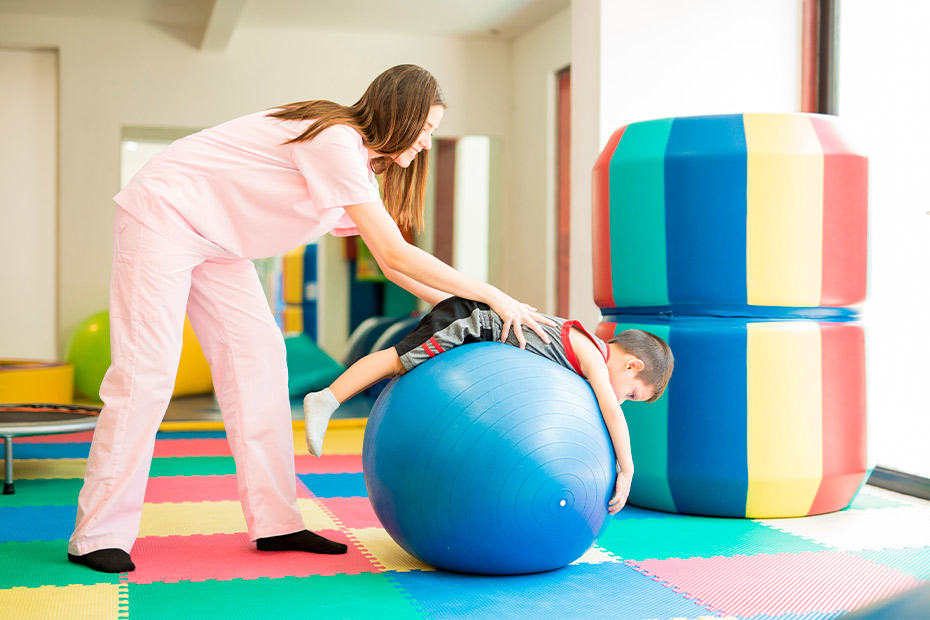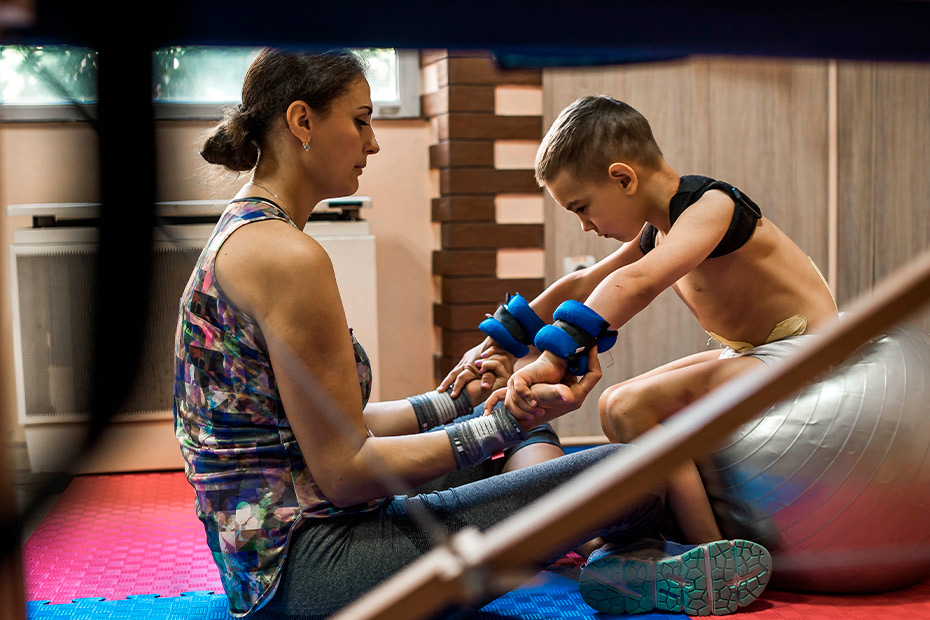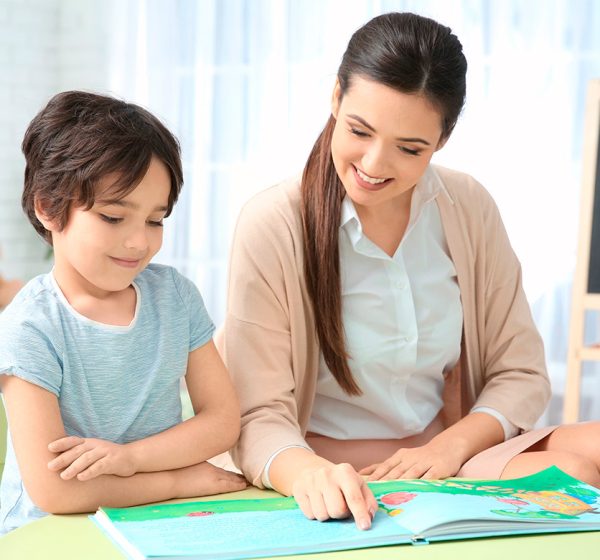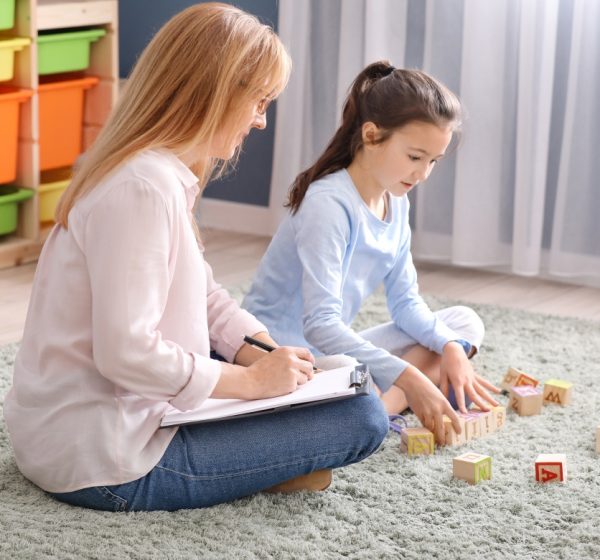Every child learns in their own way. For some, things like reading, writing, or staying focused take a little more effort. These challenges, often described as learning disabilities, can also affect how a child moves, how they sit and focus, and how they respond to their surroundings.
At Tip of the Tongue Rehab, we take a whole-child approach. That means we look at how a child learns and how they move. Pediatric physical therapy helps kids with learning disabilities gain the strength, coordination, and self-awareness they need to feel more confident in their bodies and more comfortable in school.
Here are seven ways physical therapy can support children with learning differences.
Builds the Movement Skills That Support Learning

Children with learning disabilities often struggle with body control, posture, and the coordination needed for classroom tasks. It’s not just about movement; it’s about helping the brain and body work together.
For example, a child with dyslexia might also have difficulty with balance. A child with ADHD might have low core strength or trouble staying seated. These are physical patterns, but they affect how a child takes in and responds to learning.
Therapy helps kids practice simple but important movements that support classroom readiness: sitting up straight, tracking words with their eyes, or holding a steady grip on a pencil. Each gain in body control can lead to better attention, less fatigue, and more success in the school day.
Here’s how some common learning challenges may connect with physical therapy needs:
| Learning Disability | Common Physical Challenges | How Physical Therapy Helps |
| ADHD | Restlessness, poor posture, low endurance | Builds core strength, improves body control, supports regulation |
| Dyslexia | Eye tracking issues, clumsiness | Enhances balance, coordination, and visual-motor skills |
| Dysgraphia | Poor handwriting, fine motor delays | Strengthens hands, improves grip and posture for writing |
| Auditory Processing | Delayed response to commands, poor timing | Improves rhythm and body timing through movement-based games |
| Dyspraxia (motor planning) | Trouble planning movements, poor coordination | Provides step-by-step movement guidance to build coordination |
Supports Focus Through Movement
Sitting still and staying on task can be hard for kids with learning differences. For some, their bodies are constantly in motion; for others, a weak core makes it hard to hold themselves upright and alert. Either way, the physical strain of staying seated affects their ability to focus.
In therapy, we work on balance, postural control, and body regulation in ways that feel like play. Activities like kneeling on a scooter board, balancing on one foot, or doing stretches on a therapy ball help kids feel more grounded. When children feel more in control of their bodies, they’re often better able to stay present and engaged in the classroom.
Builds Strength for Posture and Endurance

A child who struggles to sit upright may not appear tired, but that’s often what’s happening. Without strong muscles around the trunk and shoulders, sitting for even short periods can feel like hard work. This fatigue often shows up as slouching, fidgeting, or lying across a desk.
We use age-appropriate movement games to help strengthen core muscles. From animal walks to obstacle courses, we create sessions that keep kids moving in ways they enjoy. Stronger core strength makes it easier to sit, focus, and complete activities without discomfort.
This kind of strength isn’t just physical; it builds the endurance needed to stay with a lesson, finish a project, and feel confident throughout the day.
Improves Classroom Readiness
For many children with learning disabilities, the school environment can feel overwhelming. Tasks like walking in line, transitioning between activities, or sitting for circle time can be harder than they seem. Even navigating a crowded hallway or keeping track of a backpack can bring stress.
In physical therapy, we practice these types of everyday school movements. We help kids strengthen the patterns that let them move with purpose and confidence. That might include climbing therapy stairs, holding items while walking, or practicing attention-and-response games.
When these motor habits become easier, kids often feel more prepared and less anxious. That means better mornings, smoother transitions, and more positive experiences in class.
Encourages Calmer Movement and Safer Play
Some children with learning disabilities move quickly and unpredictably. Others may have trouble sensing where their body is in space, which makes play more difficult. These challenges can lead to more frequent injuries, frustrations with sports, or avoidance of physical play altogether.
In therapy, we help children gain a stronger sense of movement control. Through balance beams, jumping paths, and visual cues, kids learn how to move their bodies with more safety and intention. Over time, this helps them feel more secure when climbing, running, or engaging with peers.
Feeling safe in your body leads to more willingness to join in, and more opportunities for social growth through play.
Supports Emotional Self-Regulation Through Movement

Physical movement is closely tied to emotional control. A child who is overwhelmed or overstimulated might have trouble sitting still, following instructions, or calming themselves down. These responses are often labeled as behavioral, but they’re actually signs of dysregulation.
We use movement to help children reset their bodies. Rhythmic games, breathing exercises, and stretching activities can bring calm, improve focus, and build resilience. These tools are especially helpful for children with ADHD, sensory processing differences, or anxiety tied to learning frustration.
Helping a child feel calm in their body also helps them feel more in control emotionally, and that leads to better participation, less disruption, and more confidence throughout the school day.
Brings Everyone Onto the Same Page
Children thrive when home, school, and therapy work together. At Tip of the Tongue Rehab, we make sure everyone involved in your child’s care understands the plan. That might mean writing recommendations for the teacher, sharing home activity sheets, or talking through challenges during a check-in.
When caregivers and educators know what works, and what a child is working on, progress happens faster. It also helps children feel supported, not singled out. They know that the adults in their life are cheering them on together.
If your child has a learning disability and you’ve noticed they also struggle with sitting still, staying focused, or keeping up with physical tasks at school, you’re not imagining it. These challenges are real, and they can be supported.
Our therapists at Tip of the Tongue have helped children across South Texas build strength, improve focus, and find joy in movement. Every child deserves to feel confident in their body and capable in their learning. Let’s start with one small step.





